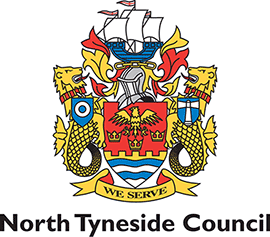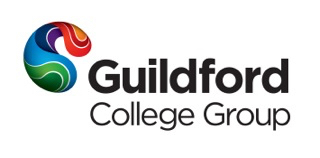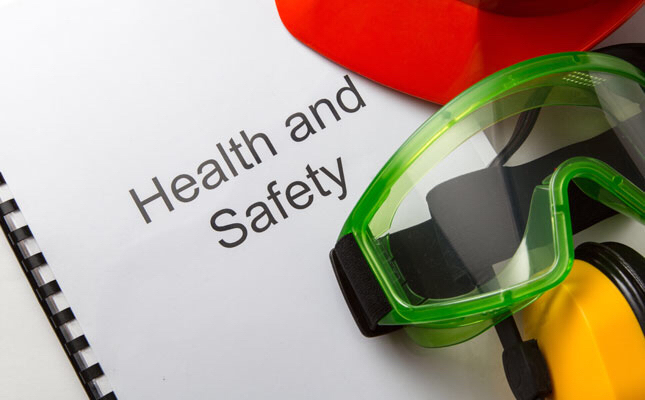Title Page
-
Audit Title
-
Site / Building
-
Conducted on
-
Prepared by
-
Location
-
Personnel
-
Workshop inspection checklist
* This checklist will be used to inspect engineering workshops used for research, teaching or maintenance, and any associated storage areas. Included will be associated corridors, stairs and communal areas such as toilets and kitchenettes/tea rooms.
* Inspections will be carried out at least twice per year and preferably once per term. Inspections shall be done when workshops are occupied by staff and learners, to get a true picture of conditions and practices.
* Upon completion of the audit, any non-conformances and observations identified will be recorded and detailed in the Corrective Action Section. -
The answer to all these questions should be ‘yes’. If ‘no’ answers are found the auditor will note the location and brief details and investigate the problem further to identify actions.
-
Has the last audit been reviewed?
-
Were previous corrective actions closed out?
Space and Layout
-
Is there enough space to move around safely? (minimum of 11 cubic metres per person)
-
Is there enough space for storage of materials & equipment? (on shelves, cupboards, benches)
-
Is there enough clear bench space to use materials & equipment safely?
-
Are unauthorised people excluded from the workshop?
Housekeeping
-
Are floors in a safe condition? (no cracks, slippery or uneven patches etc)
-
Are floors free of boxes, swarf, off-cuts & other trip hazards?
-
Are surfaces clean? (including benches, shelves, equipment)
-
Are work benches clear of clutter?
-
Are all tools adequately stored?
Ventilation
-
Is there enough fresh air, without draughts?
-
Is local exhaust ventilation (LEV) provided to remove fumes & dust? (e.g. wood dust, welding or solder fumes)
-
Are ventilation systems tested annually? (including fume cupboards & fume hoods)
Welfare
-
Are handwashing & drying facilities available in the workshop?
-
Are there enough toilets for men & women within reasonable distance?
-
Are toilets & washbasins clean & in working order?
-
Are hot and cold (or warm) running water, soap and towels (or other cleaning hand/drying facilities) provided in the toilets?
-
Are facilities in place for adequate drinking water and boiling water?
Manual Handling
-
Are stepladders or footstools used to reach high shelves?
-
Are heavy & awkward items stored at waist height where possible?
-
Are lifting aids available for moving heavy or large loads? (manual handling assessments needed for handling heavy or awkward loads)
Kitchenettes/Tea Rooms
-
Are staff & students warned & supervised to ensure there is no eating, drinking or smoking in the workshop?
-
Are rest & eating facilities provided outside the workshop?
-
Are floor and surfaces clean and tidy?
-
Is drinking water available?
-
Are power points & cables a safe distance from wet areas?
-
Are microwave oven door seals clean & undamaged?
-
Is the fridge clean & defrosted?
-
Is a fire blanket provided where electric cookers are used?
Fire
-
Are flammable substances used and stored safely?
-
Are fire exits and escape routes free of obstructions?
-
Are fire doors clearly marked and kept closed?
-
Do fire door closing mechanisms operate properly?
-
Are vision panels in doors unobstructed?
-
Are fire extinguishers provided and tested annually? (check last test date on label)
-
Are up to date fire action notices displayed in offices or corridors? (what to do in event of fire & fire assembly points)
-
Have fire wardens been appointed and trained for this area?
-
Can fire alarms be heard in all areas?
-
Are smoking rules followed?
-
Is spark proof equipment used if necessary?
People With Disabilities
-
Is there access for people with impaired mobility? (e.g. wheelchair users)
-
Is there access to disabled toilets within reasonable distance?
-
Do emergency evacuation procedures include people with disabilities? (eg those who have impaired mobility, or can't hear fire alarms or see fire exits)
-
Are there up-to-date Personal Emergency Evacuation Plans (PEEPS) for individual staff and students, if necessary?
First Aid
-
Are up to date posters displayed with names & locations of trained first aiders?
-
Are first aid boxes clearly marked & kept fully stocked?
-
Do staff and learners know how to obtain blank copies of the Accident Report Form at all times?
Hazardous Substances
-
Are up to date hazardous substances risk assessments available in the workshop, for work in progress? (COSHH assessments needed for chemicals with hazard warning labels on container)
-
Are suitable warning signs in place:
-
in the workshop?
-
on containers and equipment?
-
Are all containers correctly labelled? (name of chemical; hazard warnings)
-
Are incompatible chemicals segregated?
-
Are corrosive or flammable chemical containers kept in spillage trays?
-
Are all flammable liquids kept in suitable storage?
-
Have hazardous substances been assessed for COSHH are relevant SDS sheets readily available?
-
Are guards provided to protect against splashes?
-
Is cutting oil & coolant regularly changed, according to manufacturer's instructions?
-
Are drums stored on suitable drip trays or spill pallets?
Personal Protective Equipment (PPE)
-
Is protective clothing worn properly & in good condition?
-
Is suitable eye protection worn if needed? (e.g. face shield; goggles; safety glasses)
-
Are suitable gloves worn if needed? (against sharp objects, chemicals, heat or sparks etc)
-
Is respiratory protection suitable & worn if needed? (e.g. respirators; air-fed helmets)
-
Is all PPE stored in a clean, uncontaminated area?
-
Is suitable PPE available for emergency use? (e.g. chemical spillages)
Furniture and Fittings
-
Are furniture & fittings in good condition? (e.g. chairs, desks, shelving etc.)
Machine Guarding
-
Dangerous parts of machinery can cause serious injuries:
-
rotating parts can entangle hair or clothing
-
machine parts which move together or to a fixed point can cause crushing injuries
-
parts which move past one another can cause shearing injuries
-
people can be struck by moving parts on a machine
-
sharp edges can lead to cuts or severing injuries
-
operators can be injured by material being ejected from the machinery
-
parts of the body can be drawn into, or become trapped, between running parts in rollers, belts and pulley drives
-
stabbing injuries or skin punctures can be caused by sharply pointed parts
-
friction injuries and abrasions can arise from the operator coming into contact with rough surfaces on the machine
-
if a machine becomes very hot it can lead to burns or scalds
-
Do machine guards prevent these injuries?
-
Are guards always used?
-
Are guards fixed e.g. by screws or nuts and bolts?
-
If fixed guards impracticable, are guards interlocked, so that the machine cannot start before the guard is closed & cannot be opened while the machine is moving?
-
Where guards cannot give full protection, are work holders, jigs or push sticks used?
-
Are computer-controlled machines also properly guarded?
-
Do guards allow for safe cleaning & maintenance of the machine?
-
Do all machine users & maintenance staff know that guards must be used and how to operate them?
-
Are all guards & other safety devices inspected & tested regularly?
Machine Design
-
Are emergency stop buttons or pedals easily identifiable & within easy reach?
-
Are operating controls clearly marked to show what to do?
-
Are operating controls designed & placed to avoid accidental operation? (e.g. by shrouding start buttons or pedals)
-
Can the machine be isolated from its energy source? (e.g. electricity, gas)
-
Are the machine & work pieces securely clamped to minimise vibration, noise & risk of pieces being ejected?
-
Are warning devices audible or visible & does everyone understand what they mean? (e.g. hooters or flashing lights)
Use of Machinery
-
Are risks of injury minimised by reducing need to go near dangerous machine parts? (eg. machines are fed or cleaned automatically)
-
Are there precautions to prevent unintentional start-up of machinery? (e.g. by locking off machinery, Permit-to-Work systems, portable warning signs and barriers to prevent access)
-
Are operators supervised to ensure that they use guards & other protection provided?
-
Is there always another member of staff nearby when dangerous machinery is being operated, cleaned or maintained?
-
Is unattended equipment in use, labelled with details of hazards and contact person/user?
Instruction and Training
-
Do all machine operators know how to operate the machine(s) they use? (so they know the risks of injury and precautions to be taken)
-
Have all operators of woodworking machines & abrasive wheels completed approved training courses?
-
Is information about safe working loads, minimum speeds etc. clearly displayed on equipment?
Electrical Safety
-
Is 110 volt or battery powered equipment used whenever possible?
-
Are all machines, including cables, inspected regularly?
-
Are all electrically-powered machines tested every three years?
-
Are live electrical parts guarded at all times?
-
Is the machine disconnected or isolated from the power supply before electrical parts are exposed? (e.g. for maintenance or repair)
-
Visual Inspection of Electrical Equipment - Switch off and disconnect (unplug) equipment before inspecting. Then look for danger signs
-
Is the cable covering intact?
-
Damage to the plug - is the casing intact and pins straight?
-
Is the lead intact without any joins?
-
The outer covering of the cable is gripped where it enters the plug or equipment
-
See if the coloured insulation or copper of the internal wires are completely covered.
-
The plug, equipment or socket is free from indications of overheating (eg brown burn marks) label any faulty equipment with "do not use" signs & take out of use until checked by an electrician. Encourage other staff to report any faults or damaged equipment
-
PAT Tested? In Date?
Maintenance
-
Is there a schedule of preventive maintenance for all machines?
-
Are guards & safety devices tested & maintained in working order?
-
Are all inspections, tests, maintenance & repairs recorded in a machine log?
-
Is there a safe system of work for maintenance ( e.g. isolating from power supply, warning signs, locking-off controls?)
-
Have maintenance staff (including contractors) been warned about the dangers & precautions to be taken?
-
Are relevant internal checks being carried out?
Noise
-
Can you hear someone two metres (approx. six feet) away talking in a normal voice, while machines are in use?
-
Are ear defenders provided and worn if needed?
Gases
-
Are gas taps easy to reach & turn on & off?
-
Are gas cylinders attached to a support or trolley?
-
Are gas cylinder valves & tubing in good condition?
-
Are gas cylinders clearly labelled with contents & hazards?
-
Are the correct regulators fitted?
-
Are gas lines & isolators clearly labelled?
-
Are portable gas cylinder kits stored in a locked external enclosure when the workshop is not in use?
-
Are gas canisters stored upright and secured?
Policy and Communication
-
Is there a HS Noticeboard present?
-
Are the contents of the noticeboard upto date?
-
Are the employees aware of the contents of the health & safety policy statement?
-
Is there a health & safety law poster in the workplace?
-
Is there a copy of the current employers liability certificate available for inspection?
-
How are relevant HS communication delivered within this area?
Risk Assessment
-
Do current risk assessments follow the hierarchy of control?
-
Is there a risk assessment folder visible in relevant areas?
-
Risk assessment folder - in date? reviewed?
-
Are staff aware of control measures present through risk assessment?
-
Is relevant signage present through risk assessment?
-
Are young persons involved in the risk assessment process?
-
Do young people demonstrate behaviours such as risk awareness?
Training and Competency
-
Are staff assessed as competent on the basis of skills achieved through education, training or experience, to perform assigned tasks taking into account HSE obligations, hazards and risk associated with work activities?
-
Has the department ensured contractors within the area follow relevant procedures?
-
Have staff attended a HS induction relevant to company?
-
Evidence to indicate staff have signed the policy statement?
Participation and Consultation
-
Have employees been involved the development of risk assessments?
-
Have employees been consulted where there are any changes that affect workplace HSE?
-
Is there evidence to suggest HSE monthly reports are communicated to shop floor staff?
Emergency Preparedness and Response
-
Are staff and learners aware of emergency procedures?
-
Fire drill carried out within last 6 months? include date.
ISO 14001
-
Bins located at suitable points?
-
Bins emptied regularly? including hazardous waste removal.
-
Contaminated waste kept in covered metal containers?
-
Spill kits readily available?
-
Are staff aware of environmental spill procedures?
-
Is waste being segregated into correct bins?
Environment
-
Is the room temperature comfortable? (at least 16C)
-
Are windows in clean and safe condition?
-
Are blinds fitted to reduce glare or temperature?
-
Is lighting adequate in all areas? (in working order, clean and free of flicker or glare)
-
Is extra lighting provided for close work where needed?
-
Gas being used efficiently?
-
Electricity being used efficiently?
Behavioural Observations
-
Is there any horse play?
-
Is mandatory PPE being worn correctly?
-
Is Job/Task specific PPE being used and if so being worn correctly?
-
Are learners putting themselves at risk? Or others.
Corrective Action
-
Corrective Action
Non Conformance, Observation
-
Other Hazards/Notes & Sign Off
-
Any other hazards or notes?
-
Auditor Signature
-
Reviewed by












